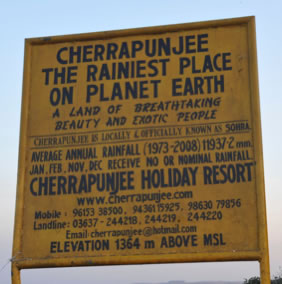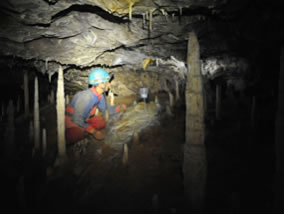Water resources in South Asia depend upon the intensity and distribution of the Indian Summer Monsoon (ISM) for which there are instrumental records covering only the last two centuries. However longterm climate proxy records,are needed to identify periodic or long-term natural forcing such as by variations in insolation, although these are often qualitative in nature. Speleothems (calcium carbonate deposits formed from percolating ground water in caves) provide rich archives of proxy data that record direct responses to local weather. In particular the isotopic ratios of 18O/16O and 13C/12C in calcite from speleothems in peninsular India have been directly related to decadal changes in monsoon rainfall. Isotope ratios in older speleothems provide semi-quantitative indications of monsoon intensity in peninsular India over previous centuries and millenia. We are extending this approach to the region where the ISM produces its greatest annual rainfall, the Shillong Plateau in NE India. New speleothem records from this area will potentially provide long-term reconstructions of the eastern ISM, which is critical for understanding the water balance in NE India and Bangladesh. Equally important, the same reconstructions will form the target for forward-modelling experiments using a regional atmospheric circulation model that will be designed to unravel the causal linkages between global and regional climate and the monsoon rainfall recorded in proxy form by speleothems. Proper understanding of these linkages is essential for the future management of water resources in South Asia.
 |
| |
 |